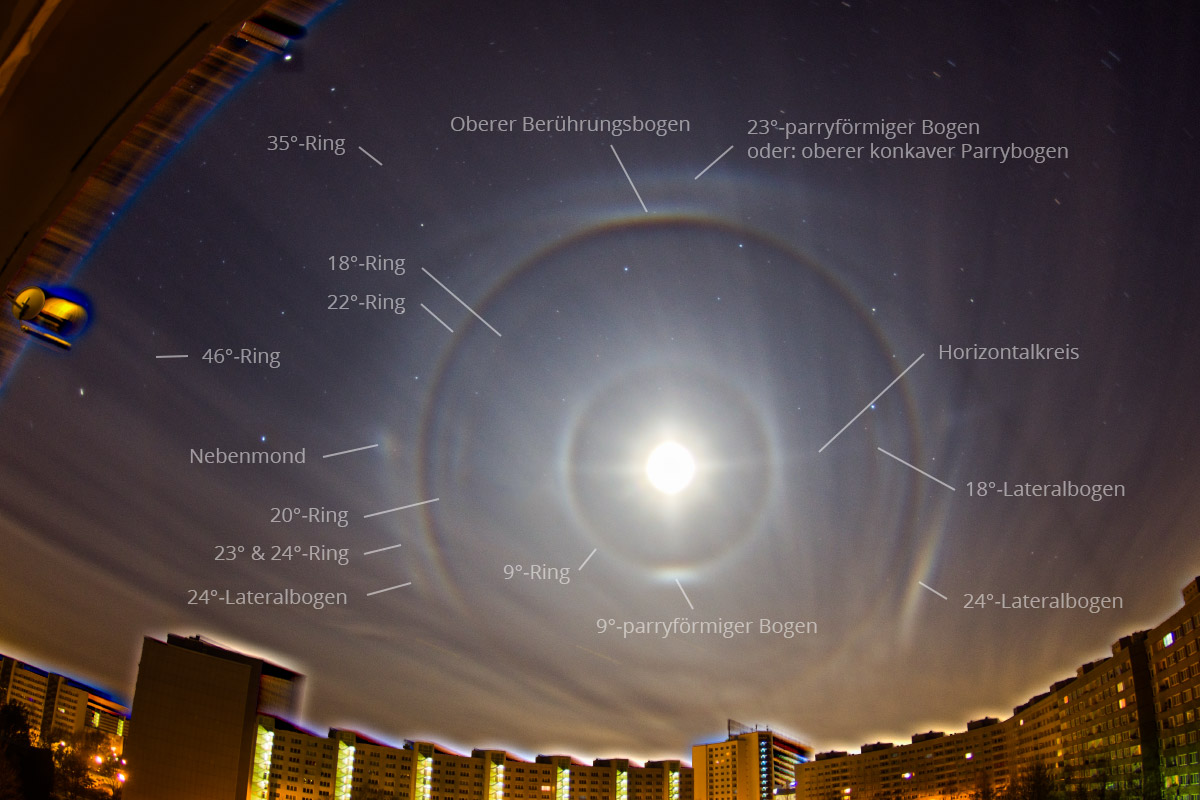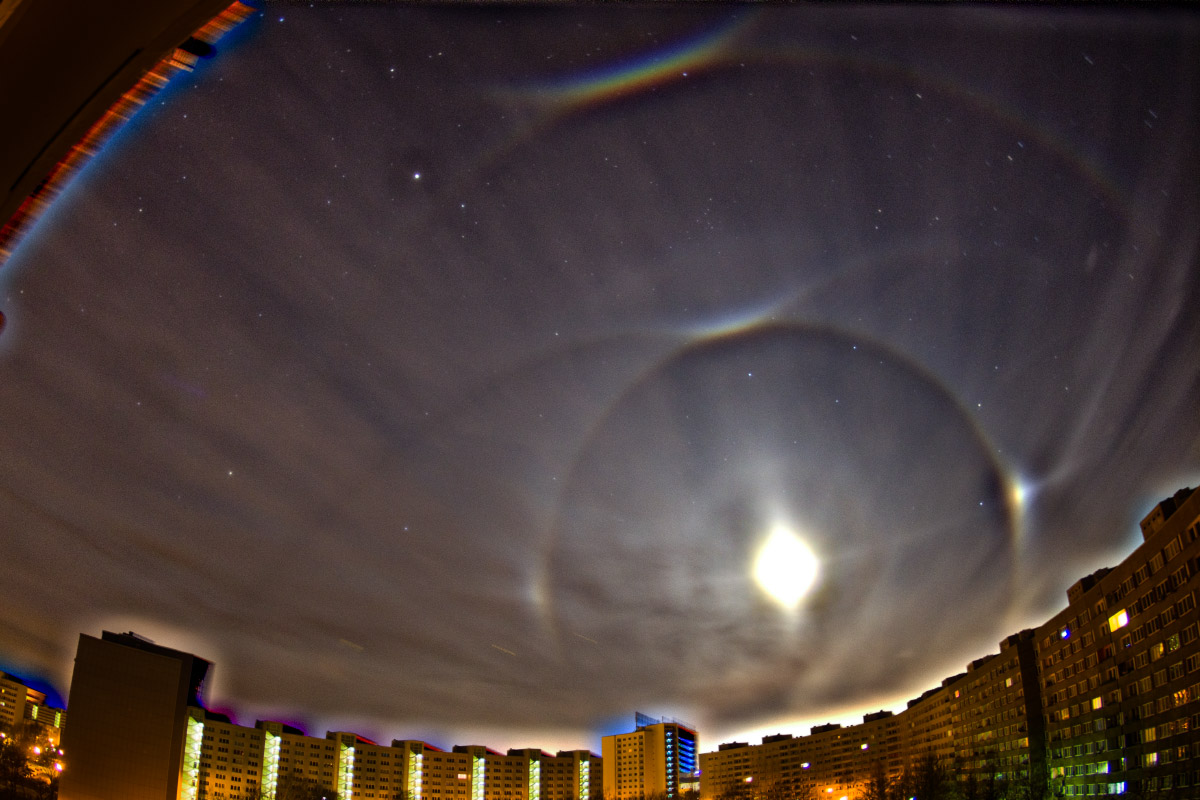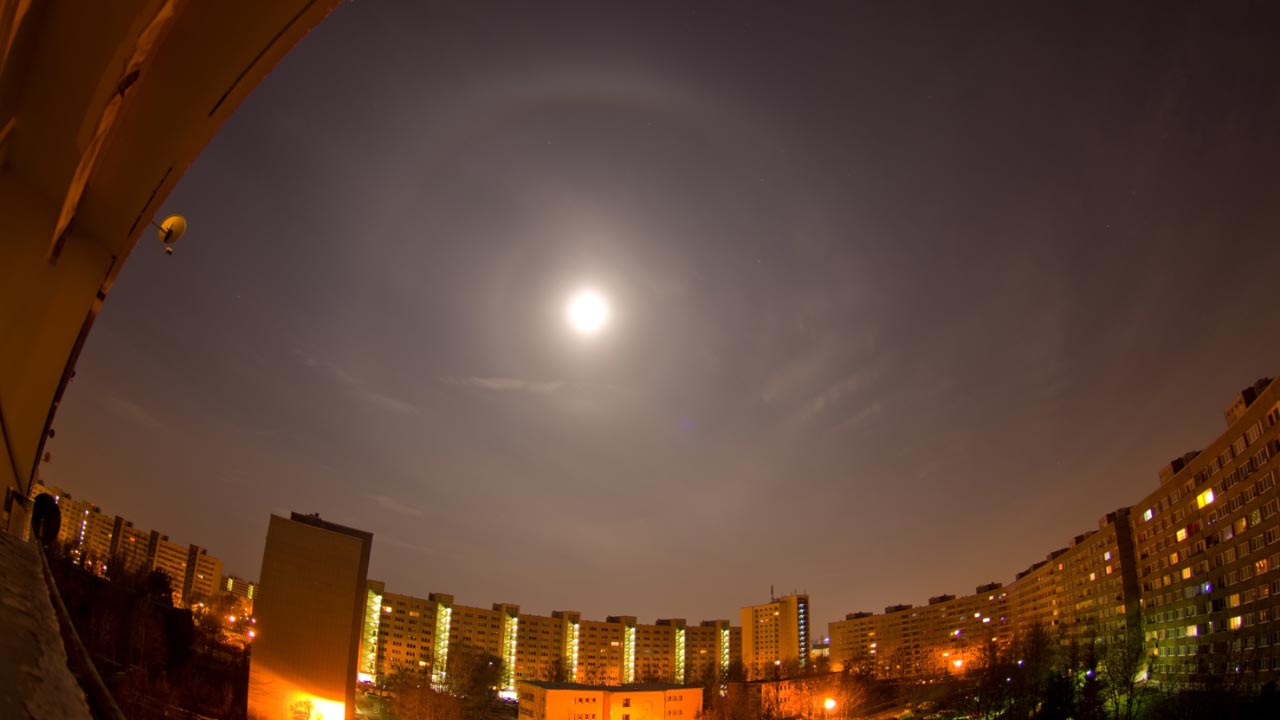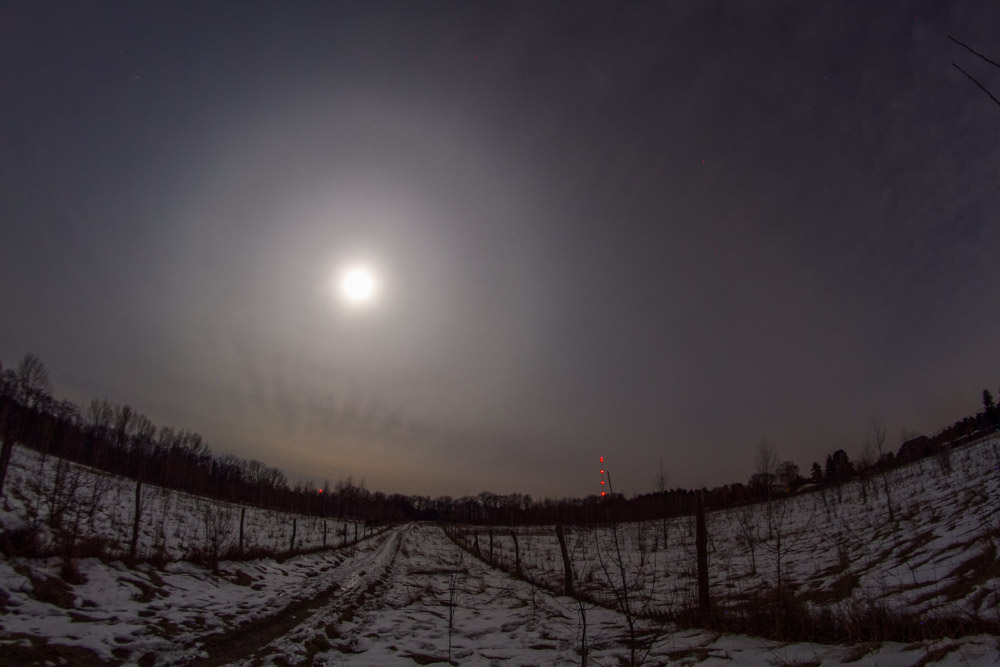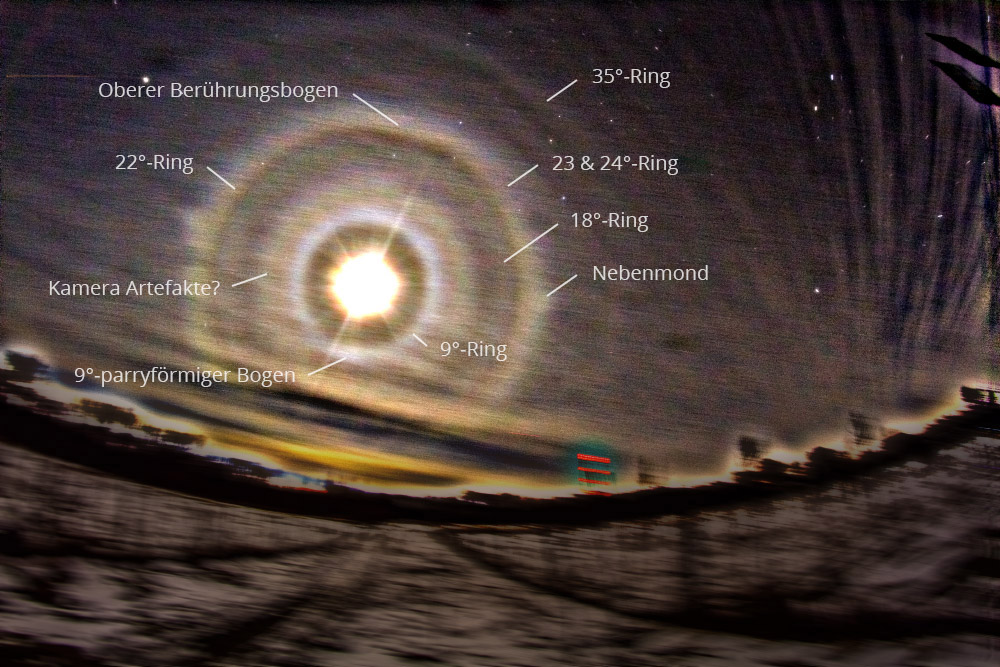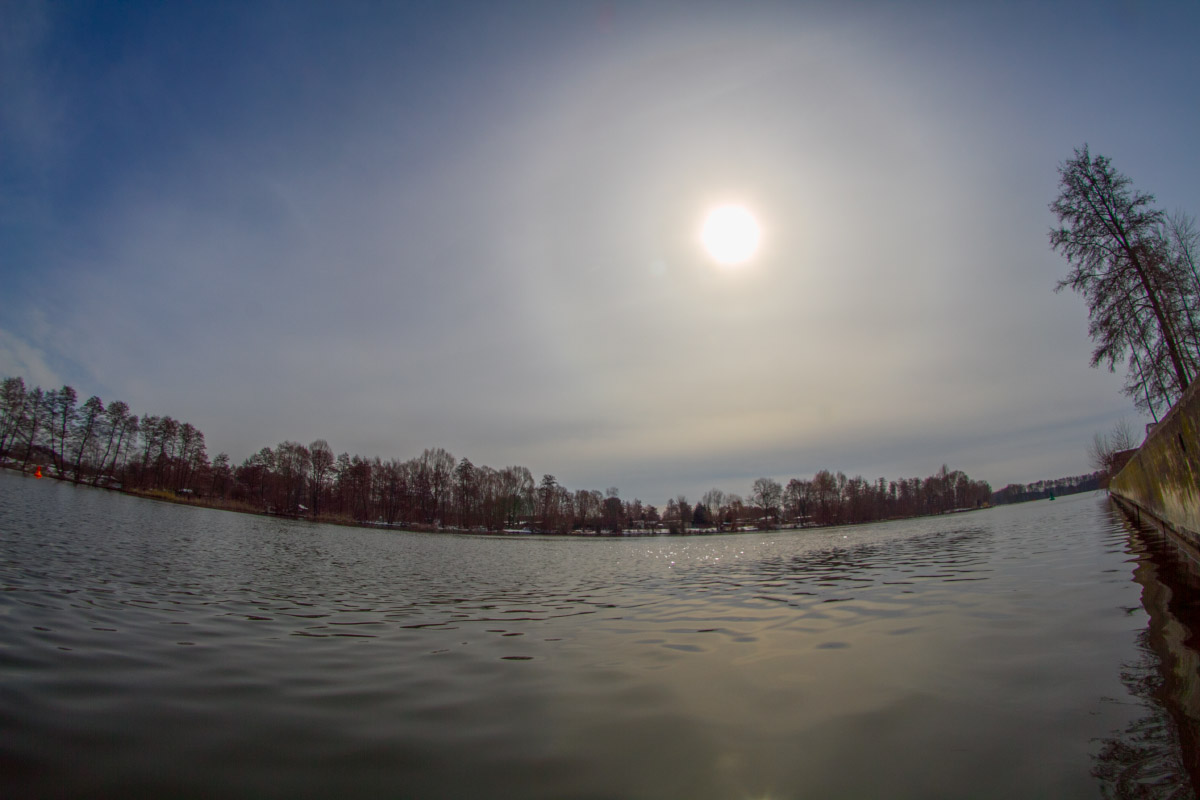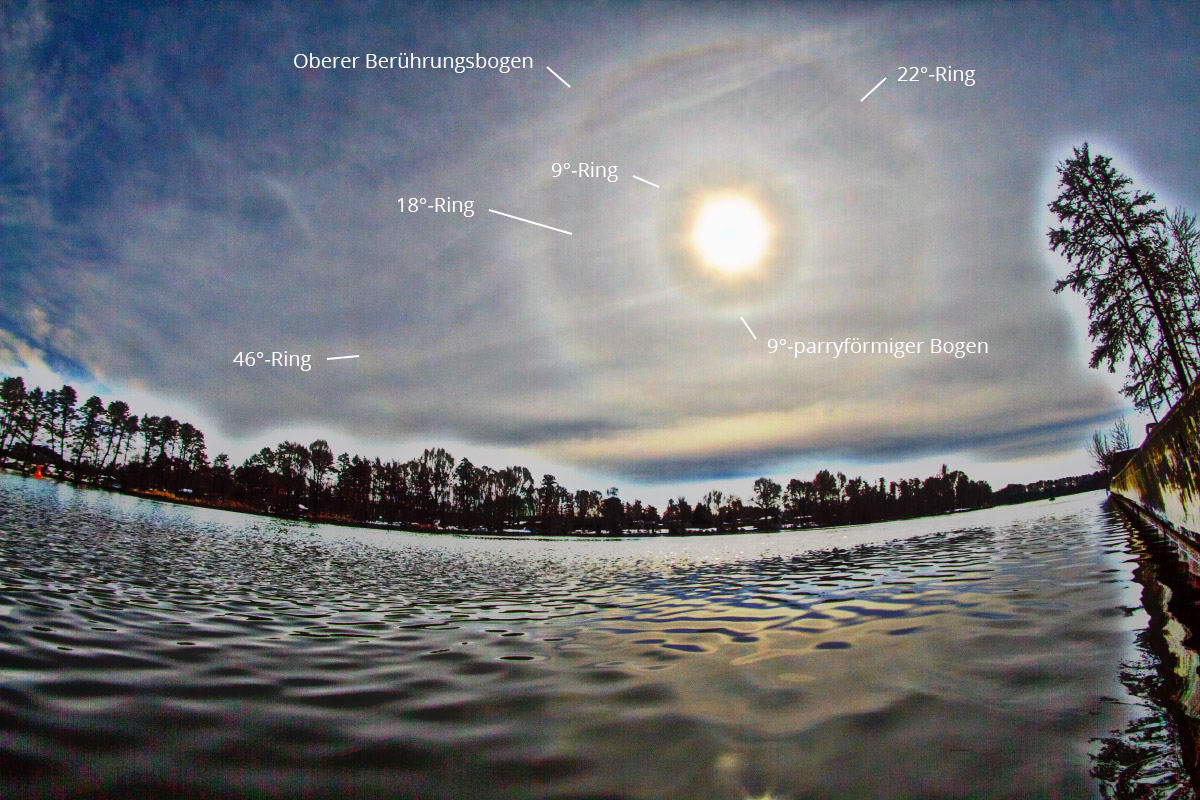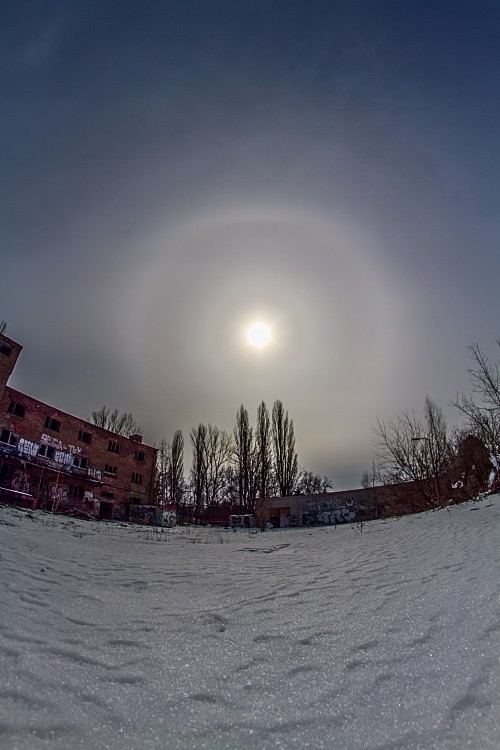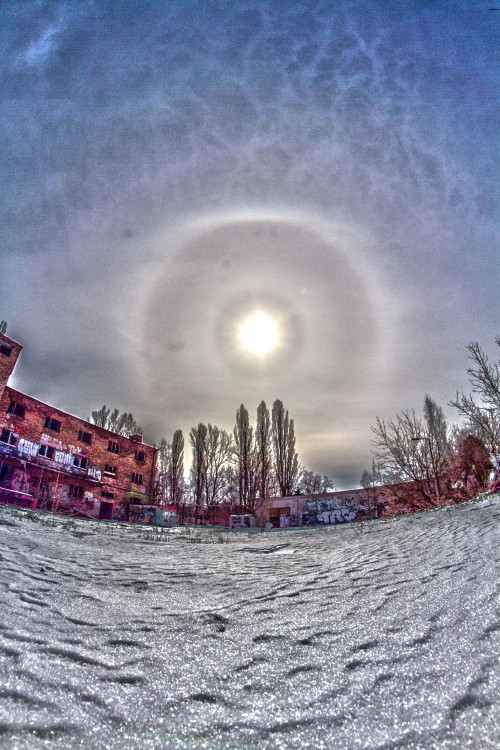Pyramidal Halo Phenomenon from 25 to 27.03.2013 in Germany
In the spring of 2013, halos could be observed on three consecutive days in Eastern Germany, forming on pyramidal crystals.
Forum Posts from the AKM Forum
03/25/2013 - Dresden
On Monday afternoon, Alexander Haußmann observed in Dresden. As he later learned, he had already missed a horizontal circle segment at noon. He writes:
Around 4:00 PM, the halos seemed to rebuild out of nowhere, initially as an arrangement of common types (22° halo, Upper Tangent Arc, 22° parhelia, Circumzenithal Arc). From 5:15 PM, the Supralateral Arc (SLA) was also detectable in photographs. Its left wing was also clearly visible to the naked eye from 5:35 PM. Interestingly, a photo taken shortly before shows the "real" 46° halo in USM processing, which splits from the SLA and runs below the CZA (SLA and CZA always touch above the sun). Probably, the later visually observable part diagonally to the left (at "10 o'clock") was therefore not purely SLA, but an overlap with the 46° halo, where both merge at this position and add their intensities.
March 25/26, 2013 - Dresden
Observer: Alexander HaußmannLocation: DresdenPeriod: 25.03.2013 / 21:00 - 03:42
However, the actual peak of halo activity was expected to be reached the following night. Since 21:00, a weak 22° ring was present on the moon. From 21:50, a 9° ring was also detectable photographically. Around 23:30, this was easily visible with the naked eye, with a brightening on the lower edge, i.e., the 9° parry arc. Encouraged by this, Alexander set up his camera on the balcony railing for a time-lapse shot, covering the next almost 4 hours (from 23:49 to 03:42). Occasional visual observations were made coming from light without full dark adaptation. The 9° ring was very clear until 03:00, and additionally, the side areas seemed brightened (an indication of the 9° column arcs). The 22° ring appeared strangely diffuse due to the presence of other pyramidal halos. On its upper edge, a diffuse combination of circumscribed halo / OBB and 23° parry arc or Parry arc was visible. The latter two types are difficult to distinguish, but since no other effects of parry-oriented crystals (e.g., moonbow) were detectable, whereas other pyramidal plate arcs were, a Parry arc is probably to be excluded.
As expected, the evaluation of the photos revealed significantly more halo types due to the longer exposure time (20 seconds) and the averaging of cloud movements.
Observed Halo Types
Photos
Videos
03/25/2013 - Wildau
Observer: Andreas MöllerLocation: WildauPeriod: 26.03.2013 / 01:54 - 02:17 AM
In the same night, Andreas Möller was also able to observe an atmospheric moon halo in Wildau. The 22° halo, both sundogs, the upper tangent arc, the circumhorizontal arc, and a faint 9° halo were visible. Thus, it just achieved a halo phenomenon. With the help of image processing (USM), the circumzenithal arc became visible.


03/26-27/2013 - Wildau
Observer: Andreas MöllerLocation: WildauPeriod: 26.03.2013 / 22:57 - 00:13
On the following night (from 26 to 27.03.2013), pyramidal halos could be observed again in Wildau. Clearly visible to the eye was the 9° ring as well as the 22° ring. Both rings were very diffuse and "washed out". After overlaying several shots and applying the unsharp mask, additional types of halos became visible. However, these were not observed visually. Among others, the pyramidal rings (18° ring, 20° ring, 23°/24° ring, 35° ring) and the parry arcs at the 9° ring can be identified.
Observed Halo Types
03/27/2013 - Wildau
Observer: Andreas MöllerLocation: WildauPeriod: 27.03.2013 / 10:00 - 03:42
The following day, the morning in Wildau began again with pyramidal halos. At the Dahme, Andreas Möller observed the 9° ring, the 22° ring, the upper tangent arc, and both 22° parhelia from 10:30. The halos were mirrored in the river. Through the application of USM, a fragment of the 46° ring, as well as the 18° ring, was revealed in the image.
The 22° ring, as well as the 9° ring, were visible all day. Around noon, in addition to the usual pyramidal halos, a supralateral arc was also detected, and a very weak parhelic circle developed. However, these two types of halos were so weak that they could only be detected with the help of image editing.

